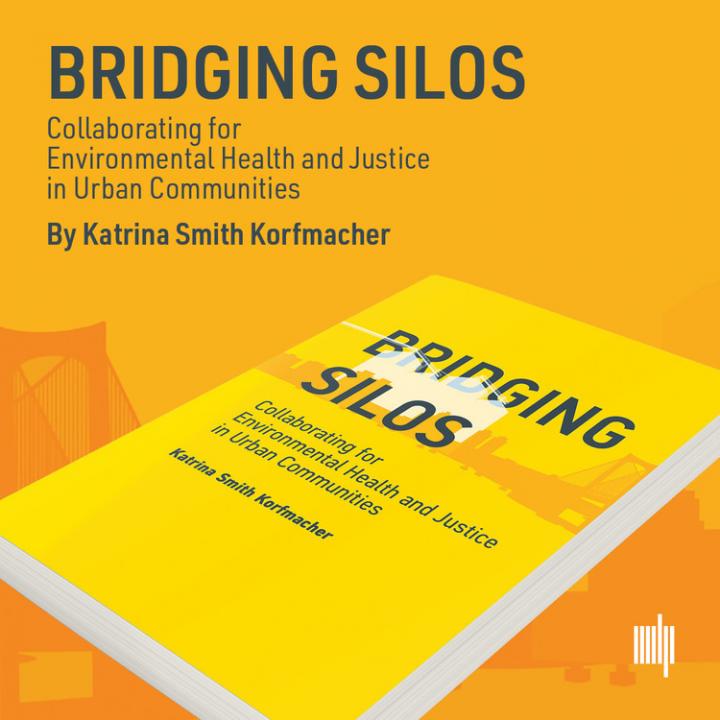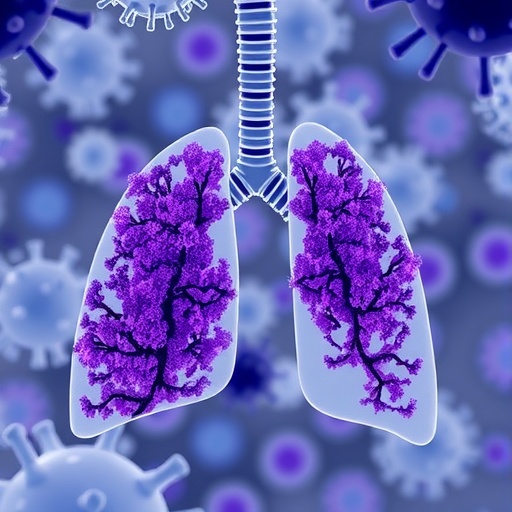
Credit: MIT Press
A new book details the insights learned from communities that came together to overcome long-standing and seemingly insurmountable environmental public health challenges. Using three case studies, including efforts to reduce childhood lead poisoning in the City of Rochester, the book demonstrates how low-income and marginalized urban communities built successful systems-change approaches to address environmental health disparities.
Bridging Silos: Collaborating for Environmental Health and Justice in Urban Communities by Katrina Smith Korfmacher, Ph.D., an associate professor in the University of Rochester Department of Environmental Medicine, highlights how local partnerships between community, governmental, and academic stakeholders can raise public awareness, mobilize scientific information, and carry out advocacy to impact policy change. Korfmacher also shows how holistic approaches to environmental health problems often extend beyond the traditional focus on pollution control to include land use planning, transportation, food systems, and housing.
The book points to several trends that heighten the importance of local environmental health initiatives, including rising health care costs, growing understanding of the impacts of the environment on health, concerns about health inequities, barriers to effective action at the state and federal level, and a desire on the part of the health care community to identify and mitigate “upstream” threats to health.
“Environmental factors significantly contribute to health inequities experienced by vulnerable populations in the U.S. and the greatest burden is often borne by lower-income communities of color,” said Korfmacher. “The purpose of this book is to demonstrate that broad-based collaborations between communities, governments, and researchers hold the potential to promote local solutions to pressing environmental health problems – and explore how to better support their growth.”
The book includes three case studies of successful community-based initiatives:
The Coalition to Prevent Lead Poisoning — Rochester, NY: In 2002, studies revealed that children in the City of Rochester suffered from elevated blood lead levels more than 10 times the national rate. These findings galvanized a coalition of community members, scientists, lawyers, health officials, government, educators, and advocates to take action. The resulting efforts led to a groundbreaking city lead law in 2005. Now considered a national model, this law’s implementation contributed to a 90 percent decrease in children with elevated lead levels.
Healthy Duluth – Duluth, MN: An example of applying “healthy communities” principles which recognize that people living in poorer neighborhoods often lack access to healthy, affordable food and opportunities to be physically active in their daily lives. Community groups and health professionals came together in Duluth to promote equitable transportation, brownfield redevelopment, walking trails, and improvements in health system planning. In 2016, the principles of health and fairness were enshrined in the city’s strategic plan.
THE Impact Project – Southern California: While air quality in the U.S. has dramatically improved since the passage of the Clean Air act in 1970, communities that are located adjacent to major industrial and transportation hubs remain at risk from air pollution. The expansion of activity at the ports of Los Angeles and Long Beach spurred an effort by academic and local environmental justice groups to increase consideration of health in decisions about proposed highway, port, and railyard expansions.
These examples provide a roadmap for coalitions of community organizations, technical experts, and decision-makers to reframe old problems in new ways. By building “bridges” between the separate “silos” of environment and health, Korfmacher argues, local groups can bring about the systems changes necessary to address environmental health disparities. The book highlights ways governments, academia, and funders can better support such innovative work.
“Bridging Silos offers hope at a time of federal inaction on pressing environmental and public health issues,” said Gina McCarthy, former administrator of the U.S. Environmental Protection Agency (2013-2017) and a professor at the Harvard University School of Public Health. “Through practical examples, Korfmacher shows that by listening to the most vulnerable voices, working across political and bureaucratic boundaries, and designing systemic solutions, our local communities can keep our country moving forward.”
###
Media Contact
Mark Michaud
[email protected]
Original Source
https:/




